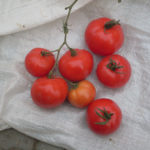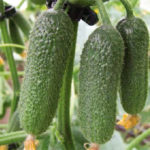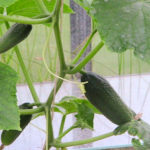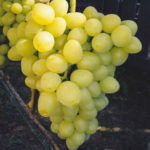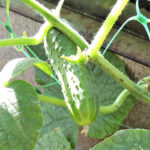Rose Baroness (Baronesse)
Currently, the assortment of rose varieties is so diverse that everyone can decorate their flower garden with decorative perennials, guided by their own taste. For example, fans of bright colors of buds and supporters of experiments will not leave indifferent the variety of Baroness. This culture has an exquisite appearance, which, along with its regal name, allows us to call it an outstanding flower queen among other noble beauties.
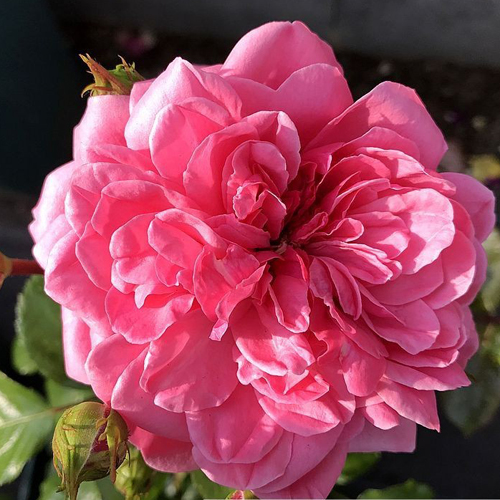
History of appearance
Baronesse is a member of the floribunda group of nostalgic roses. He was bred in the German rose-growing nursery Tantau, which has long been famous throughout Europe. This happened in 2009. During its existence, the culture has received several prestigious awards at flower competitions and exhibitions. So, in 2011, she won a rose competition in Rome, receiving a gold medal, and at a similar event, La Tachita won the title of "Best Floribunda" and first prize. A year later, the collection of awards for the variety was replenished with a third prize, presented at a competition in Vienna.
Description of appearance and features
This plant forms a strong, strong, dense and at the same time compact bush, the height of which varies from 60 to 80 cm. The diameter of the crown of the Baroness is about half a meter. Strong shoots are decorated with dark green foliage with a glossy sheen. The flowers of the plant are rosette-shaped, densely double. Their purple-pink hue is quite intense, and the ancient form attracts with its classic harmony. The size of the opened buds is small: only 6-8 cm in diameter. But the flowers bloom slowly enough to allow you to enjoy the bright colors and iridescent glow of the flower petals. On each stem of the bush, 3-5 buds are formed in large racemose inflorescences. Their aroma is pleasant, but weak.
The flowering of the rose is long-lasting, abundant, repeated. Flowers remain on the plant for a long time and do not fade in the sun. Only their outer petals acquire a lighter shade, but not under the influence of direct sunlight, but as they grow older. The inflorescences of Baronesse are very resistant to precipitation: they do not acquire ugly spots from rain, but only slightly lean down, getting wet, but after drying they raise their flower "heads".
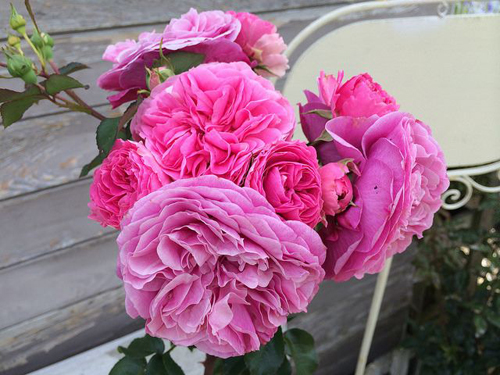
The German variety is not very susceptible to fungal diseases. Without shelter, a rose can hibernate when the temperature drops to -23 ° C.
Growing and care
It is recommended to plant the Baroness in a moderately lit area of the site. It grows well in partial shade. It is better not to choose too sunny, as well as extremely shady places for placing the culture in order to avoid problems with its flowering and well-being. For planting a spectacular beauty, it is preferable to use fertile, loose soil with a sufficient amount of moisture and a slightly acidic reaction. Compliance with this condition is the key to the lush flowering of the variety. At the bottom of the hole dug out on the site, you first need to lay a high-quality drainage layer, and then apply organic fertilizer. When you begin to cover the lower part of the seedling lowered into the planting hole with earth, deepen the root collar into the ground no more than 2-3 cm.
Caring for a bright floribunda consists in the regular implementation of watering, dressing, and weeding. Also, the rose requires annual sanitary pruning (in spring and autumn), loosening the soil and filling the area of the trunk circle with mulch. The most important maintenance procedures for Baronesse are soil moistening and crop fertilization. For watering perennials, it is recommended to use settled water at room temperature. The use of cold moisture will be stressful for the flower and negatively affect its well-being. Watering is done in the morning or evening. In the heat, a noble plant should not be watered. One adult bush consumes about 15-20 liters of water. The frequency of this event: 1-2 times a week.
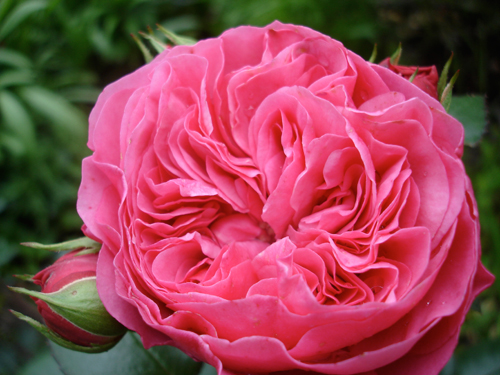
The Baroness needs top dressing in the spring, at the beginning of the period of active growth, and in the summer. In the first case, nitrogen fertilizers are applied under the crop to build up its green mass, in the second, mineral concentrates are used, it is possible and specialized, intended specifically for roses. Complex fertilizers are necessary for shrubs during the budding period and at the peak of flowering. A couple of weeks after flowering, the plants are fed with phosphorus-potassium fertilizer.
Pruning is done as soon as the buds begin to swell on the rose. This makes it easier to determine which crop shoots are dry and which are viable. In the process of this event, frozen and damaged branches are removed. Strong shoots are shortened, leaving only 5-7 buds on them. This will improve the decorative effect of the bush and provoke early flowering of the perennial. If the bush is already old, it can be rejuvenated by pruning it harder. In summer, the plant needs to be promptly removed from dried inflorescences. In the fall, diseased, dry branches are removed and overgrown bushes are thinned out.
It is imperative to cover the rose for the winter. However, they do this only after the autumn pruning and hilling the bush with earth, humus or compost. Spruce branches or non-woven material are used as insulation. If you prefer the film, stretch it over the frame installed above the plant.
Use cases
The Baroness variety is ideal for planting in ridges, mixborders, on the sides of garden paths, in round flower beds. It looks good in groups, especially when placed against a bright green lawn or dark green needles in the background of conifers. The culture is suitable for growing on a low stem. It is included in mixed compositions, in which a variety of flowering annuals and perennials, fragrant herbs, cereals, miniature conifers can be neighbors of the floribunda. Ground cover plants can be planted around the rosebush, forming a variegated or monochromatic carpet during flowering. It is appropriate to use Baronesse for single landings. It will look incredibly beautiful near the gazebo. In addition, the variety is grown in containers, using as a result for landscaping balconies, terraces, verandas, roofs of houses. The flowers of a beautiful plant are especially popular with florists, as they keep their shape for a long time and retain their external attractiveness, freshness, including the intensity of color. In bouquets, pink-purple inflorescences should be combined with more fragrant roses of similar shades.

